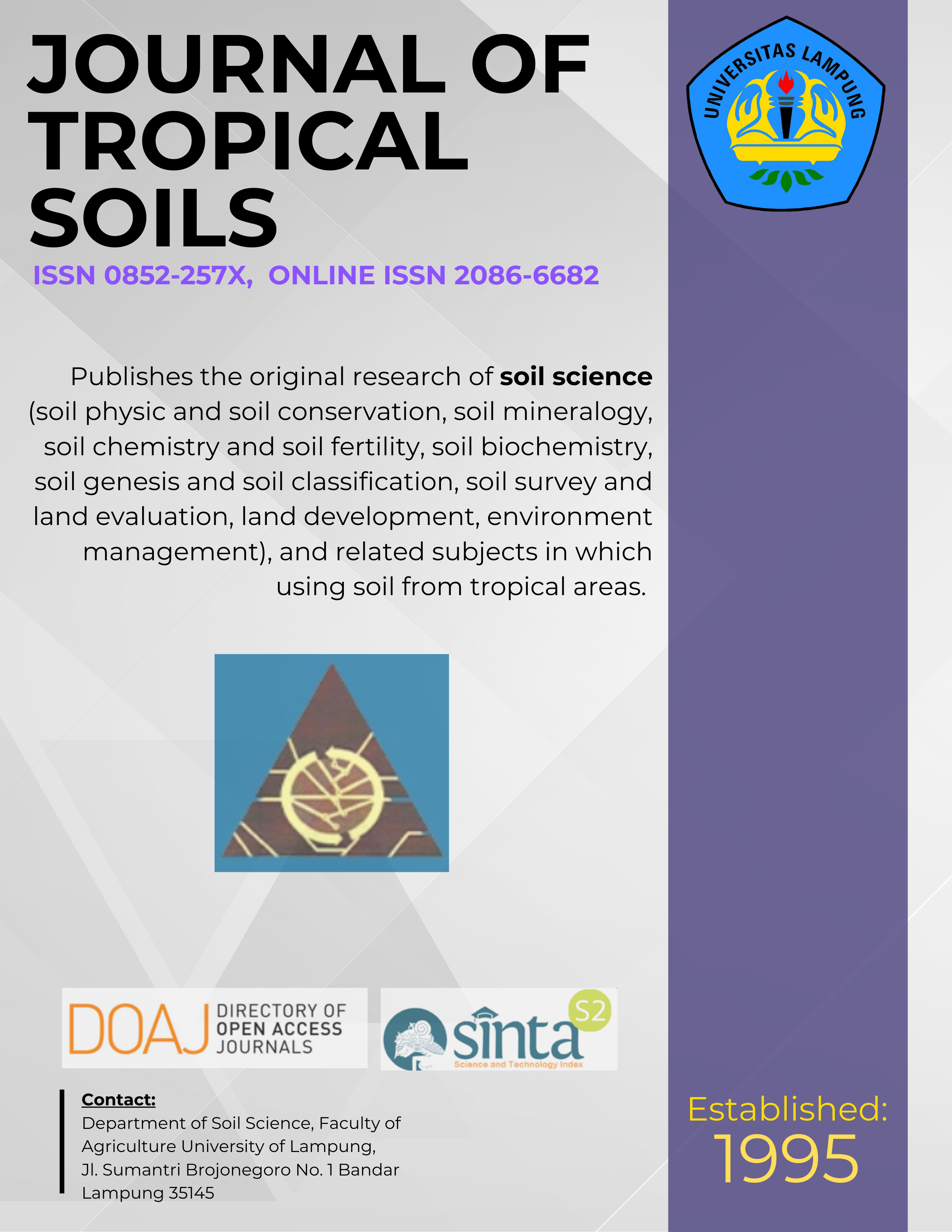Penentuan Kurva Retensi Air Tanah Laboratorium dengan Sensor Resistensi dan Kapasitansi
Main Article Content
Abstract
A soil water retention curve determination method is developed based on the use of gipsblock and capacitance sensors. The objective of the research was to provide a simple and quick method in characterization of soil water retention in the laboratory based on resistance and capacitance sensors. Undisturbed soil sample collected using stainless steel ring sampler 8cm in diameter and 6cm height. Digital gipsblock and capacitance sensors connected to personal computer detected periodically water tension and volumetric water content of the sample. To test the reliability of collected data, measurement using pressure plate apparatus was also conducted. Result of the experiment for soil samples textural classes loam to clay loam leaded well compromise with result from pressure plate. However, significant deviation of soil water content has been detected as the soil water suction exceeded 15,000hPa. Deviation of measured water content increased with the reducing water content up to 0.300cm3.cm-3. Implication of this result showed a further finer standardization assesing water tension above 10.000hPa is needed.
Downloads
Article Details
License for Authors
Authors who publish with this journal agree to the following terms:
- Authors retain copyright and grant the journal right of first publication with the work simultaneously licensed under a Creative Commons Attribution License that allows others to share the work with an acknowledgement of the work's authorship and initial publication in this journal.
- Authors are able to enter into separate, additional contractual arrangements for the non-exclusive distribution of the journal's published version of the work (e.g., post it to an institutional repository or publish it in a book), with an acknowledgement of its initial publication in this journal.
- Authors are permitted and encouraged to post their work online (e.g., in institutional repositories or on their website) prior to and during the submission process, as it can lead to productive exchanges, as well as earlier and greater citation of published work (See The Effect of Open Access).
License for Regular Users
Other regular users who want to cite, distribute, remix, tweak, and build upon author’s works, even for commercial purposes, should acknowledge the work’s authorship and initial publication in this journal, licensed under a Creative Commons Attribution License.

